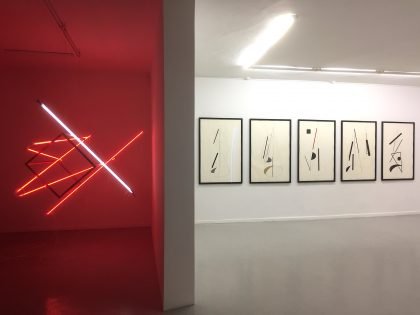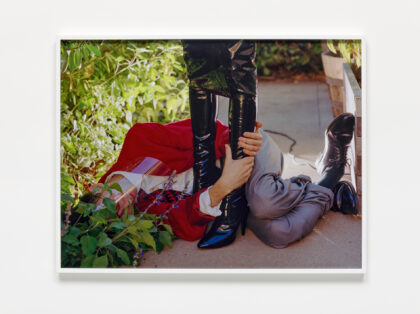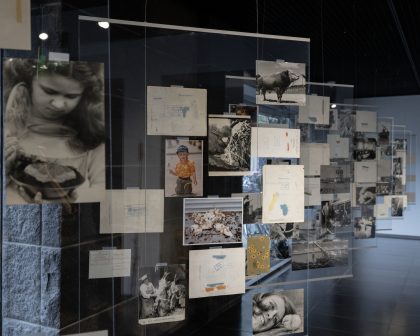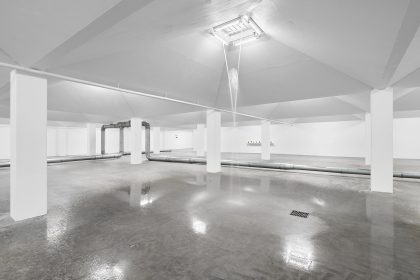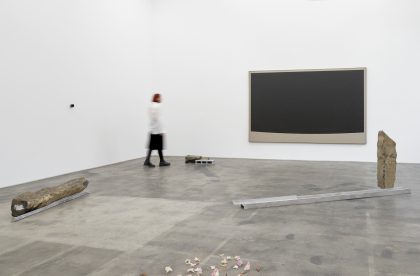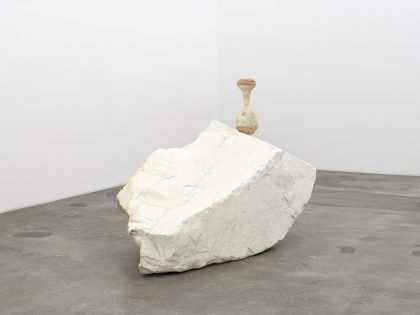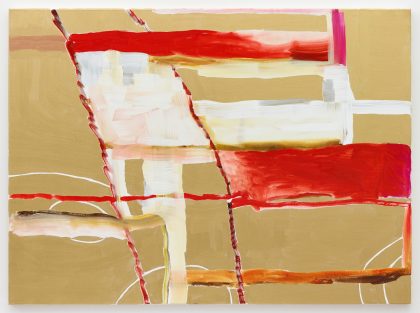Anbefalet under Det skal du se! uge 44
Nils Stærk is proud to present Runo Lagomarsino’s solo exhibition We have been called many names. The exhibition is Lagomarsino’s third solo presentation in the gallery.
On occasion of the exhibition PhD candidate at the Royal Danish Academy of Fine Arts Katarina Stenbeck has written an essay on Lagomarsino’s practice, the following is an excerpt:
“Scattered around the gallery space are 26 plaster casts of the insides of hats, placed on simple wooden constructions so they form a group and become a formation of kinds of bodiless figures. The casts are all different as a result of the variety of hats they are made from and the tactility of the plaster surfaces tell stories about the specific types of hats, their material, age and how they have been used. Even slight traces of the person wearing the hat can be read in the inverted language of the cast. Runo Lagomarsino collected the hats in Los Angeles from people working as cleaners, gardeners, security personnel and other service job that remain in the margins of visibility. We have been called many names is the title Lagomarsino has given the piece as well as the exhibition. How can we understand this ‘we’?
A large piece of fabric separates the main gallery space from a smaller space. This fabric acts as a support for a black and white print of Guiseppe Pellizza da Volpedo’s monumental painting of 1901, The Fourth Estate. The painting depicts a group of workers on strike moving towards the viewer. Lagomarsino has printed the image upside down on the fabric.
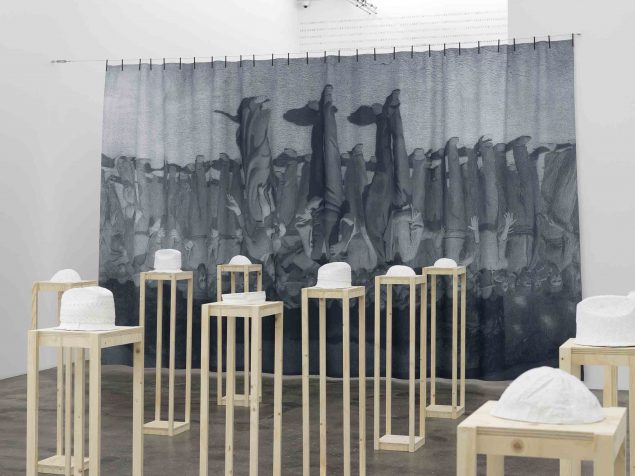
To reverse the position of conventional representations destabilises the way we perceive them and reveals the construction behind naturalised concepts and world views. In his drawing América Invertida (1943), Uruguayan artist Joaquín Torres-García turned the commonplace map of South America on its head, placing the Equator at the bottom and Uruguay at the centre, hereby reorganising dominant ideas of centre and periphery.
The sociologist Boaventura de Sousa Santos argue that the global South is not a geographical concept but rather a metaphor for the human suffering caused by capitalism and colonialism and we should understand that ‘it is a South that also exists in the geographic North, in the form of excluded, silenced and marginalised populations, such as undocumented immigrants, the unemployed, ethnic or religious minorities.’
The gesture of inversion makes visible that which was previously invisible. In his work Lagomarsino seeks out the fractures of dominant narratives and tease out new understandings. But rather than merely being an act of revealing the hidden structures of meaning it is also a language with the power to reconfigure existing ideas.”
Kilde: Nils Stærk
Glentevej 49
2400 København NV
Holbergsgade 19
1057 KBH K
Tilgængelighed:
Niveaufri adgang - ja
Handicaptoilet - ja
Gratis for ledsager - ja
Glentevej:
Tirs-fre 11-17
Lør 11-15
Holbergsgade:
Tors-fre 12-17
Lør 11-15
Gratis entré
+45 32544562

